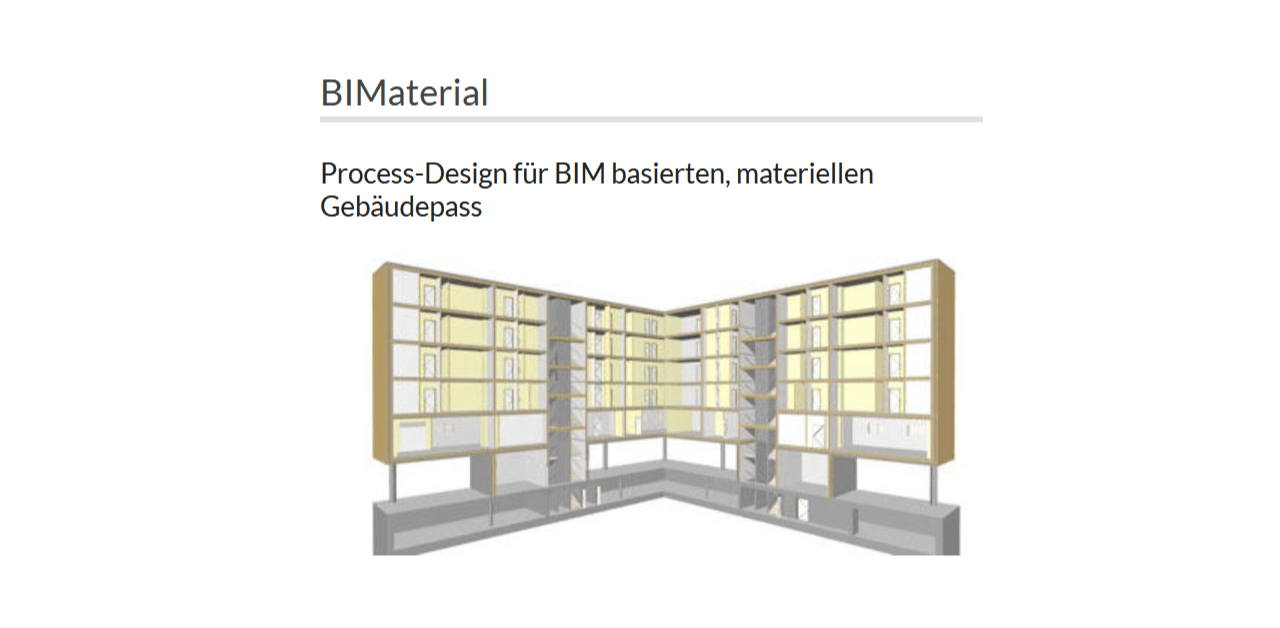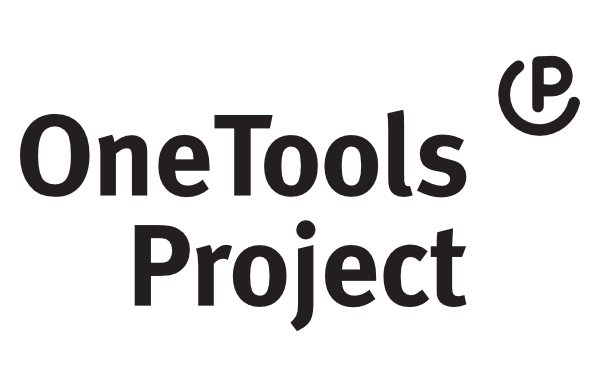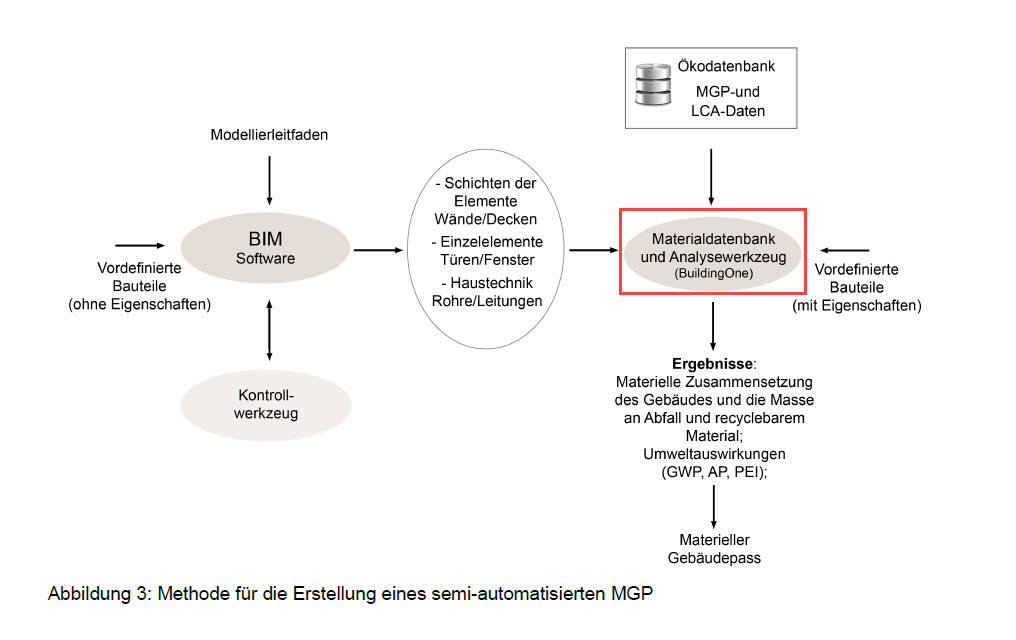BuildingOne in research
BuildingOne in research

Process design for BIM-based, material building passport
BuildingOne was used in a project of the City of the Future research and technology programme of the Federal Ministry for Transport, Innovation and Technology (BMVIT) in Austria.
In the study BuildingOne is used to evaluate and analyse the materials used in the building model.
BuildingOne serves here as a material database and analysis tool for creating a BIM-based material building passport (MGP).
Project description
A material building passport (MBP) is a documentation of the material composition of a building that provides quantitative and qualitative information about the relevant raw materials in a building. The benefits of a life cycle-oriented MGP are multiple: as a planning and optimisation tool with regard to the efficient use of materials and subsequent dismantling, for documenting the necessary material information for the recycling of buildings at the end of their life, and as the basis for an urban raw materials register at city level. The new planning tools that enable life-cycle building management, such as Building Information Modelling (BIM), hold great potential for the generation of an MGP. The project aims to develop the methodology for digital building modelling to create a material database and the creation of the deconstruction concept using BIM in the design phase (optimisation of planning) together with rule sets (query parameters) for the MGP analysis of the BIM model and to create a specification for a BIM-based MGP app.
Source: www.industriebau.tuwien.ac.at
Project description
A material building passport (MBP) is a documentation of the material composition of a building that provides quantitative and qualitative information about the relevant raw materials in a building. The benefits of a life cycle-oriented MGP are multiple: as a planning and optimisation tool with regard to the efficient use of materials and subsequent dismantling, for documenting the necessary material information for the recycling of buildings at the end of their life, and as the basis for an urban raw materials register at city level. The new planning tools that enable life-cycle building management, such as Building Information Modelling (BIM), hold great potential for the generation of an MGP. The project aims to develop the methodology for digital building modelling to create a material database and the creation of the deconstruction concept using BIM in the design phase (optimisation of planning) together with rule sets (query parameters) for the MGP analysis of the BIM model and to create a specification for a BIM-based MGP app.
Source: www.industriebau.tuwien.ac.at
Methodological approach
The first step was to conceptualise the MGP and define the parameters and calculation methodology. The MGP thus calculates the recycling and disposal potential as well as the life cycle assessment. The structure and the exact function of the MIP in the different life cycle phases were defined. Subsequently, the workflow for linking several digital tools and databases for the semi-automated generation of the MGP was defined. The BIM model is linked to the material inventory and analysis tool (BuildingOne), where the eco-data is managed and assigned to the components. The proof of concept based on a use case demonstrated the suitability of the workflow and methodology developed in this way for optimising planning and documenting materiality. Based on the results of the use case, a set of rules was created, which represents the necessary workflows including software and data for the generation of the MGP.
Source: BIMaterial_Final_Report.pdf
Methodological approach
The first step was to conceptualise the MGP and define the parameters and calculation methodology. The MGP thus calculates the recycling and disposal potential as well as the life cycle assessment. The structure and the exact function of the MIP in the different life cycle phases were defined. Subsequently, the workflow for linking several digital tools and databases for the semi-automated generation of the MGP was defined. The BIM model is linked to the material inventory and analysis tool (BuildingOne), where the eco-data is managed and assigned to the components. The proof of concept based on a use case demonstrated the suitability of the workflow and methodology developed in this way for optimising planning and documenting materiality. Based on the results of the use case, a set of rules was created, which represents the necessary workflows including software and data for the generation of the MGP.
Source: BIMaterial_Final_Report.pdf

